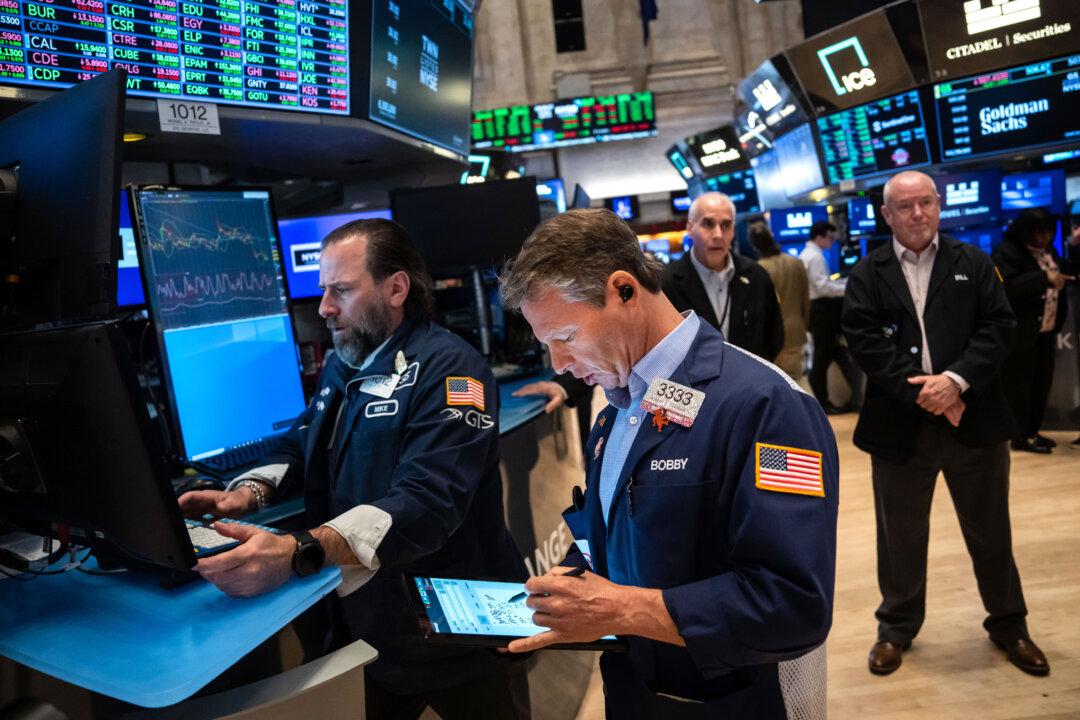A key Federal Reserve inflation measure rose as expected in January, signaling that monetary authorities could witness stalled progress in their inflation fight.
The PCE slowed to an annualized rate of 2.4 percent in January, from 2.6 percent in December 2023, which matched economists’ expectations.
Core PCE, which excludes the volatile energy and food components, dipped from 2.9 percent to 2.8 percent year over year. That represented the lowest core PCE inflation reading since April 2021.
On a month-over-month basis, core PCE jumped by 0.4 percent, up from a 0.2 percent rise in December 2023.
Moreover, the supercore PCE, excluding housing, was higher month over month and inched higher to 3.5 percent because of increases in health care and transportation services.
BEA data revealed that prices for services rose by 0.6 percent while prices for goods dropped by 0.2 percent to kick off 2024. Additionally, food prices surged by 0.5 percent, and energy costs fell by 1.4 percent.
In other federal agency statistics, personal income soared by 1 percent in January, up from a 0.3 percent increase in December 2023 and much higher than the market forecast of 0.4 percent.
The substantial boost “primarily reflected increases in government social benefits, personal income receipts on assets, and compensation,” the BEA noted.
Personal spending came in as expected, rising by 0.2 percent in January, down from a 0.7 percent increase in December 2023. The lackluster boost to spending was fueled by a significant decline in automobile sales. The largest contributors to the spending gains were housing and utilities, financial services and insurance, and health care.
The personal savings rate as a percentage of disposable income clocked in at 3.8 percent.
Market Reaction
U.S. stocks were relatively unchanged on Feb. 29 as investors digested a key inflation metric that met economist expectations along with fresh U.S. housing numbers. The S&P 500 index rose 0.23 percent, while the Nasdaq Composite added about 0.5 percent in afternoon trading. The Dow fell about 50 points, or about 0.1 percent.The U.S. Dollar Index (DXY), a gauge of the greenback against a basket of currencies, erased its gains and further weakened below 104.00.
Volcker-Era Concern
Looking ahead to the next inflation readings, the Cleveland Fed Bank’s Inflation Nowcasting model estimates the annual CPI and PCE readings will come in at 3.1 percent and 2.3 percent, respectively.While many market analysts think it is almost certain that the central bank will achieve its 2 percent target, some economists question if it will be sustainable.
Connor Lokar, an economist at ITR Economics, told The Epoch Times that it won’t be as easy as the financial markets think.
In the “good old days” before the COVID-19 pandemic, the Fed was frustrated that it struggled to keep the annual inflation growth rate at 2 percent. Moving forward, “we think the new days are going to be something like trying to bring it down to 2 percent on any sort of sustained basis,” he said.
“We might run into some CPI numbers that aren’t quite as cooperative as either the Street or [Fed Chair] Jerome Powell would prefer to see as we move through this year,” Mr. Lokar said.
By 2025, inflation could return to 4 percent or 5 percent, he said.
Would this be similar to what happened in the 1980s?
Some Fed officials have expressed concern about reliving that decade, when inflation kept returning, forcing the U.S. central bank to pivot back and forth.
Richmond Fed President Tom Barkin recently discussed “the many stories of inflation head-fakes,” alluding to the days of former Fed Chair Paul Volcker.
Because the U.S. economy remains on solid ground and inflation remains above trend, monetary policymakers are urging patience before pulling the trigger on the first rate cut. This has forced investors to adjust their expectations on interest rates.
The next two-day rate-setting Committee meeting is scheduled for March 19 and 20.







